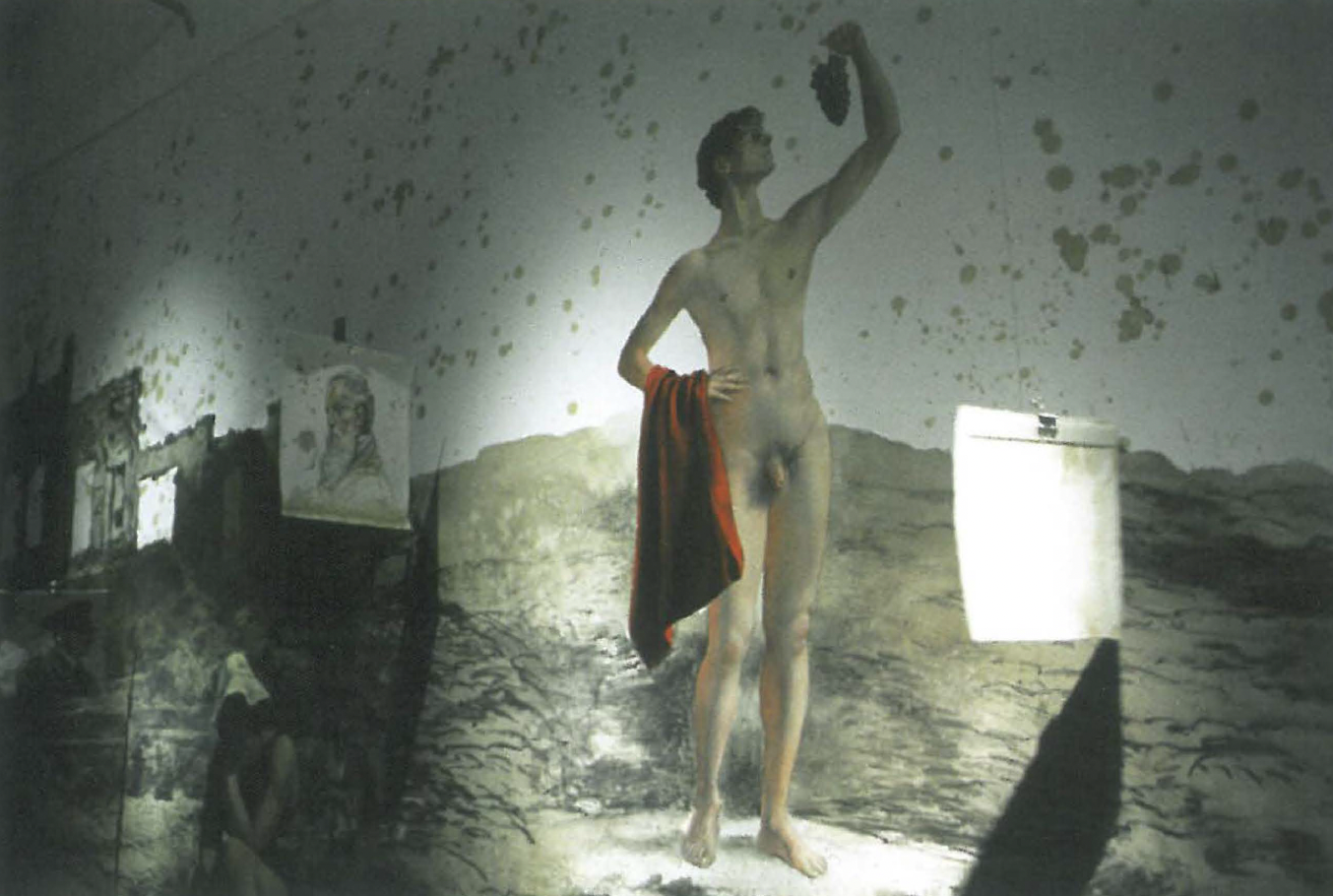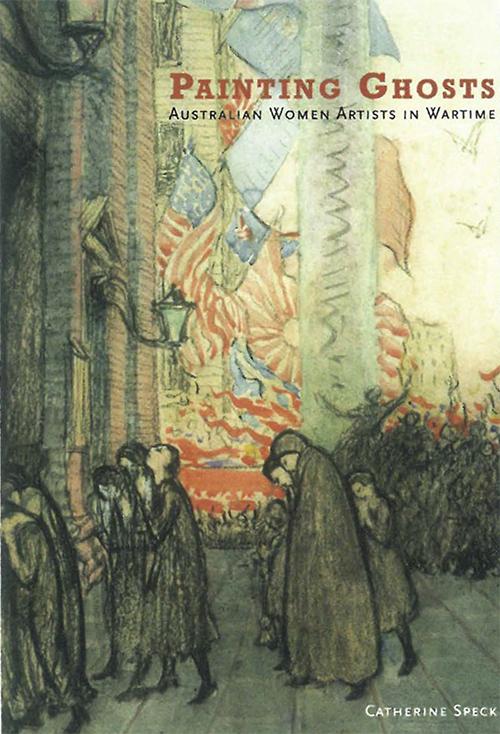
Putting the work of these two artists together even though they are really two unconnected solo shows underlined their globalism – each takes a big chunk of the world as their subject. The Russian artist Genia Chef presented two mural size unstretched canvases on which were painted neo-classical ruins, in a city and by a beach in a kind of amalgam of the last days of Pompeii and the bombing of Dresden. Portraits of 20th century male world leaders such as Mao, Mussolini, and Hitler, drawn on cardboard boxes were hung over the large canvases thus forming a sort of teaching aid or potted history of some of the world, perhaps as a prelude or rehearsal for the next one. Yet the neo-classical style of the paintings and drawings suggests both elegy and degeneration.
The quality of the painting and drawing is simply not of a very high standard – it is unavoidable to think of Russian artists Komar and Melamid and of Chinese artists who trained in representational skills to levels unknown in the West, their level of accomplishment are simply not present in Chef's work. Even though Edward Lucie-Smith in the catalogue essay gives his imprimateur to Chef's work I find it unconvincing and feeble.
The large projection that accompanies the paintings shows a time-lapse video of an explosion in front of which the outline of a shaky cross on a stick waves back and forth. This work has much more atmosphere and evocative power than the somewhat wooden figures, faces and scenes that Chef has drawn and painted and it is just possible that it is the artist's intention for a kind of degeneracy and disintegration to be literally modelled by his work. Though he now lives in Berlin Chef is one of the chief artists of the Novia Academia group which originated in St Petersburg inspired by the ideas and theories of the late Timor Novikov who, writing after the fall of communism, believed that progressive art needed to steal beauty back from advertising.
Nicholas Folland has an interest in forces of nature like ice and water, heat and space, and using them in oblique ways. Mount Hopeless (2001) three heated granite boulders inspired by the defeated end of Edward Eyre's 1840 journey across Australia and I think I was asleep (2003) a chandelier suspended on an angle with ice hanging from it are two of his most memorable pieces. The works he creates are installations yet somehow they are more like sets or vignettes, scenarios for unwritten films, scenes from dreams which await their dreamers. The four elements of Doldrum (2005) include a rigged boat in which a great deal of collected cut glass lit from below lies like facetted blue ice; a bathroom with a wooden floor over which water kept flowing from the toilet, bath and sink; all the landmasses of the world cut out of a map and made into a caricature of a Chinese dragon and two square blue maps of all the water in the Pacific and Indian Oceans respectively which contains no inhabitable land. Music by Grieg, the Holberg Suite Op. 40: Air, played over the rushing flowing water. The stories that maps tell are, of course, fluid and post-Tsunami; it is possible that the map used by Folland is out of date yet a sense of the silence of unnamed or unexplored places remains as if the sea has escaped exploration. Discovery, explorers, harsh deserts and frozen wastes, all these dramatic and extreme moments inspire Folland. In looking up doldrum and doldrums in my dictionary I find that doldrum (singular) is a dull, sluggish or stupid person while doldrums (plural) is defined as dullness or drowsiness or despondency as well as the condition of a ship which makes no headway, or a region of calms, sudden storms and light unpredictable winds near the Equator. Folland's title uses the singular therefore confounding the obvious references of his work. Some story about the Marie Celeste is haunting Folland and just maybe he sees the earth as having affinities to that ghost ship.












